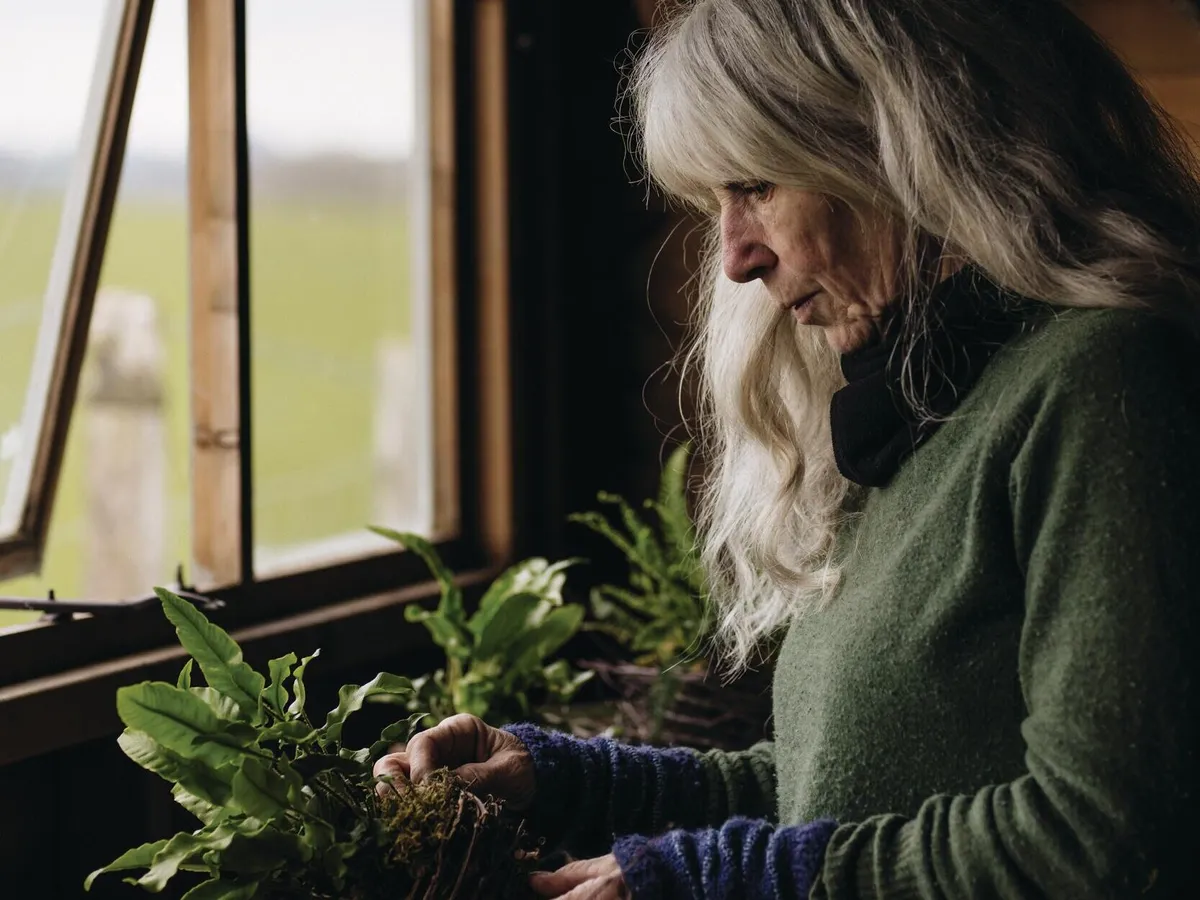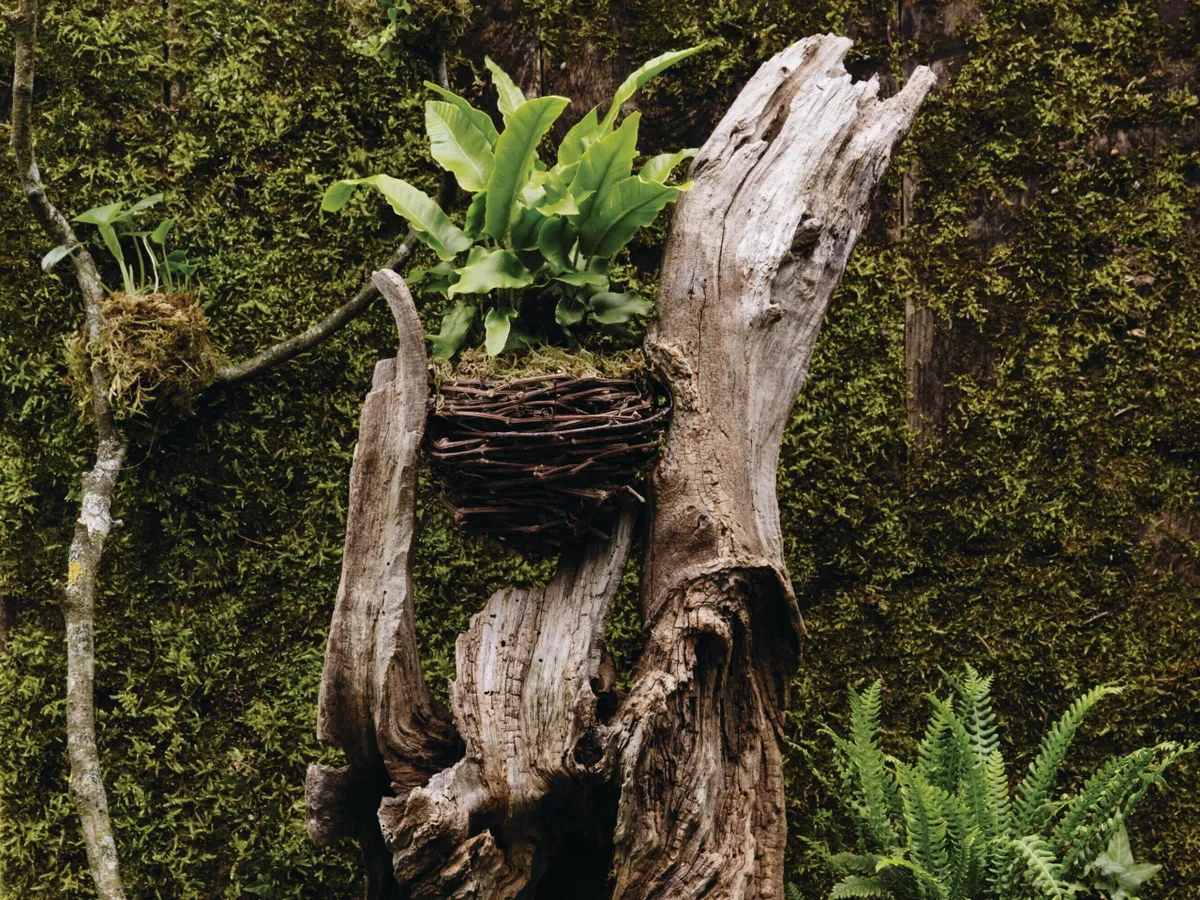I adore ferns, moss and trees, so this was a dream build inspired by my indoor bird’s nest fern. I wanted to create a mews of nests from garden material to display my outdoor ferns and had great fun weaving these structures among the crevices of a gnarly, old tree stump. I added extra branches bearing a collection of mossy kokedama, arranged against the weathered, moss-covered wooden lids of our compost bins, creating a verdant spring display.
You may also like
- How to display your house plants
- How to make an Easter wreath with spring flowers
- A lovely Easter branch display using hazel
- Ideas for a white garden

How to make a tree stump display with ferns
If you’ve ever really looked at the intricate architecture of a bird’s nest you will know they are sublime works of art. To make my simplified versions, I started with a wire frame, bending three pieces of wire into semicircles, twisted around each other at their midpoints to make a bowl shape with six equal portions.
I then wove 90cm lengths of pre-soaked brown willow strands in and out of the wire shell, working from the base up in concentric circles.
I filled any gaps with extra willow and lined with moss before placing the fern inside with a mantle of compost.
Alternatively, a coir pot wrapped in willow or flexible garden prunings held in place with a little wire would suffice.

To make the egg-shaped kokedama, I removed the plants from their pots, and moulded a little clay soil around their rootballs before wrapping in moss, secured with dark cotton.
I soaked them well to hydrate them, patting them dry before hanging from the slimmer branches. I used a variety of green ferns and houseplants, but a selection of wildflower plugs, violas, primroses or even muehlenbeckia would look fantastic.
Plants to use
- Asplenium scolopendrium Hart’s tongue fern, producing an evergreen rosette of arching, undulating fronds
- Asplenium trichomanes Maidenhair fern
- Blechnum spicant Hard fern or deer fern
- Peperomia rotundifolia Trailing jade, houseplant
- Pilea depressa Trailing baby’s tears, houseplant
You will need - Large, weathered log
- Branches
- Wire and wire cutters
- 90cm-1.2m lengths of brown willow
Salix triandra ‘Black Maul’, for the nests or you could use prunings of birch, Virginia creeper or vine - Moss
- Clay soil
- Scissors
- Cotton thread
- Ribbon
- Paper towel for drying
Recommended suppliers
- Musgrove Willows Willow Fields, Lakewall, Westonzoyland, Bridgwater, Somerset TA7 0LP. Tel 01278 691105, musgrovewillows.co.uk
- Twelve Nunns 16 Carisbrook Grove, Stamford, Lincolnshire PE9 2GF. Tel 012778 59045, twelvenunns.co.uk Breeder and online supplier of Harvington hellebores.
- Welsh Organic Wildflowers, Llantilio Crossenny, Abergavenny NP7 8TH. welshorganicwildflowers.com
- Find wooden eggs, eyelets, floristry kit, ribbons etc on online craft stores.